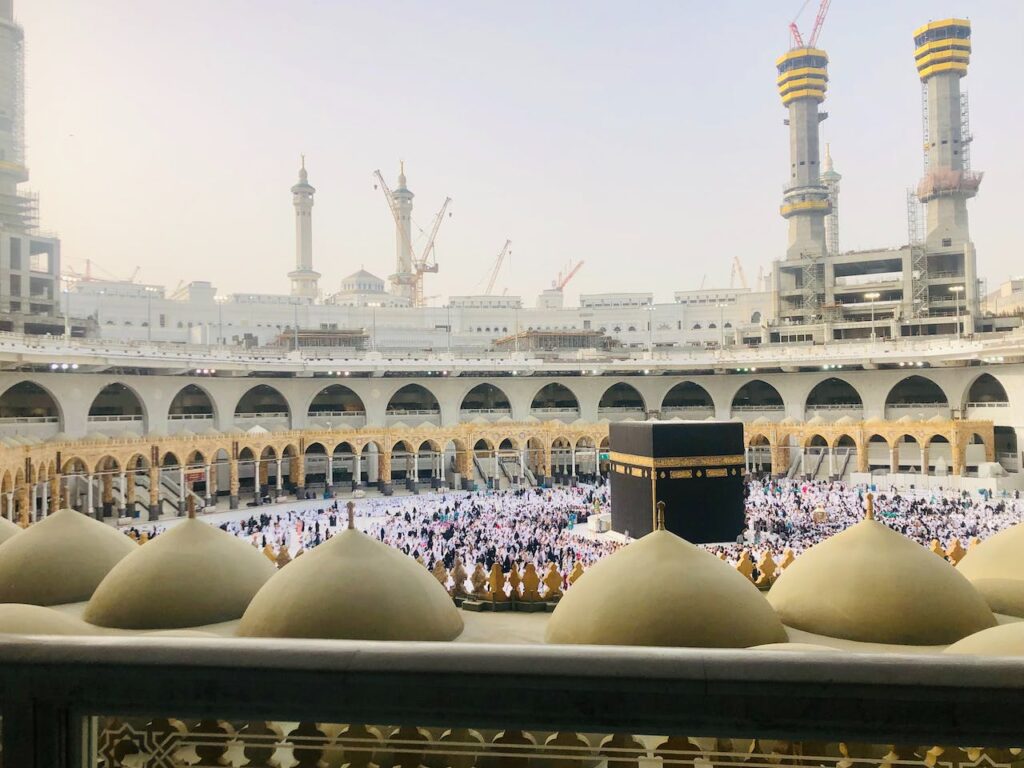When embarking on the spiritual journey of Umrah, one of the significant rituals is the Sa’i between Safa and Marwa. This ritual holds immense importance in Islam and symbolizes the devotion and perseverance of Hajar, the wife of Prophet Ibrahim (pbuh). In this guide, we will explore the steps involved in the Sa’i ritual and understand if you can climb Safa and Marwa or not. Let’s dive in!
Can You Climb Safa and Marwa?
Climb Safa and Marwa is not an obligation even though it is legislated as the Prophet (pbuh) did it. Rather, what is obligatory is to cover the entire distance between Safa and Marwa in Sa’i.
Know More About this Fatwa: It is not obligatory to climb up to the top of Safa and Marwa
The Significance of Safa and Marwa
Safa and Marwa are two small hills located within the precincts of Masjid al-Haram in Mecca. These hills hold great historical and religious significance for Muslims around the world. According to Islamic tradition, Hajar, the wife of Prophet Ibrahim (pbuh), climbed these hills in search of water for her infant son, Ismail.
When Hajar reached the top of Safa, she saw no water in sight. She then descended and climbed Marwa, hoping to find any sign of water. This ritual of climbing back and forth between the two hills, now known as Sa’i, is an integral part of Umrah.
Today, the hills of Safa and Marwa are enclosed within the Grand Mosque, and pilgrims perform the Sa’i ritual as a commemoration of Hajar’s struggle and trust in Allah’s guidance.
The Sa’i Ritual: Steps and Meaning
The Sa’i ritual involves walking seven times between the hills of Safa and Marwa. Here are the steps to perform the Sa’i:
1. Entering the State of Ihram
Before starting the Sa’i ritual, pilgrims must enter the state of Ihram. This involves purifying oneself through ablution and wearing the prescribed attire for Umrah, which includes two pieces of unstitched white cloth for men and modest clothing for women.
Entering the state of Ihram signifies the pilgrim’s intention and readiness to perform Umrah.
Before starting to perform Sa’i, the circumambulation must be completed
2. Proceeding to Safa
Once in the state of Ihram, pilgrims proceed to Safa, which is the starting point of the Sa’i ritual. It is recommended to recite supplications and praise Allah while walking towards Safa.
3. Climbing Safa and Making Dua
Upon reaching Safa, pilgrims climb to the top and face the Kaaba. It is recommended to raise one’s hands and recite supplications and prayers to seek blessings and guidance from Allah.
4. Descending and Walking Towards Marwa
After making dua at Safa, pilgrims descend and walk towards Marwa. The distance between Safa and Marwa is approximately 450 meters, and this path is covered seven times during the Sa’i ritual.
While walking between Safa and Marwa, pilgrims can recite prayers, invoke Allah’s blessings, and reflect on the significance of this ritual.
5. Reaching Marwa and Making Dua
Upon reaching Marwa, pilgrims climb to the top and face the Kaaba. Similar to the step at Safa, they raise their hands and make supplications to Allah.
6. Returning to Safa
After completing the seven rounds between Safa and Marwa, the Sa’i ritual concludes with the return to Safa. Pilgrims climb to the top of Safa for the final time and recite supplications, thanking Allah for the opportunity to perform Umrah.
7. Completion of the Sa’i Ritual
Once the Sa’i ritual is completed, pilgrims have successfully fulfilled this important part of Umrah. They can now proceed to other rituals, such as the Tawaf around the Kaaba and the Sa’i between Safa and Marwa.
FAQs
Can women climb Safa and Marwa during their menstrual cycle?
During their menstrual cycle, women are not allowed to perform the Sa’i ritual or any other rituals of Umrah. However, they can still visit the Grand Mosque and engage in supplications and other acts of worship.
What is the significance of the number seven in the Sa’i ritual?
The number seven holds symbolic significance in Islamic tradition. It represents completion and perfection. By walking between Safa and Marwa seven times, pilgrims demonstrate their commitment and dedication to Allah’s commands.
Is the Sa’i ritual performed during Hajj as well?
Yes, the Sa’i ritual is also performed during Hajj as part of the pilgrimage. The Sa’i between Safa and Marwa is one of the key rituals of both Umrah and Hajj.
Conclusion
The Sa’i between Safa and Marwa is a powerful ritual that connects Muslims to the story of Hajar’s struggle and trust in Allah. By performing this ritual, pilgrims not only fulfill a crucial pillar of Umrah but also experience a profound spiritual journey. Safa and Marwa stand as symbols of faith, determination, and the ultimate belief in Allah’s guidance.
To clarify: This is not a fatwa, we are not qualified to issue any fatwas, but all mentioned are quoted from the sayings of reliable Islamic scholars. If you want a fatwa you have to get it from a place dedicated to that.






